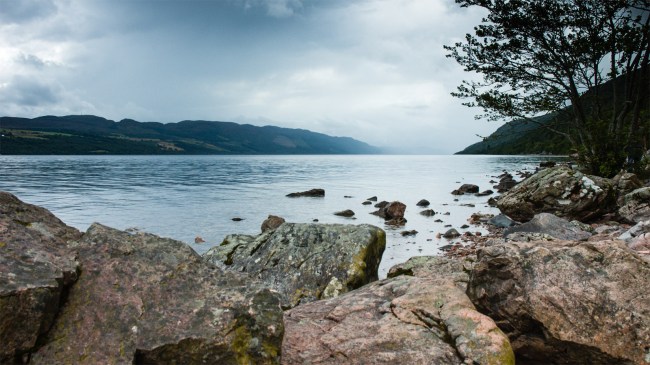iStockphoto
A prolific Loch Ness Monster hunter has once again spotted what he believes is further proof that the elusive and mysterious creature is alive and well and still inhabiting Scotland’s famous lake.
New video taken from a webcam maintained by Visit Inverness Loch Ness at Shoreland Lodges, near Fort Augustus on the loch’s southern shore was recently shared by Eoin O’Faodhagain, who has documented around two dozen sightings of the monster since 2017.
This new footage shows what appears to be a 10-foot-long wake on the surface of the water.
“Usually wakes don’t last that long,” said O’Faodhagain. “I was shocked at the length of time.
“My first instinct of what it could be was: this could be our resident monster. The disturbance of the wake on the surface of the water is 10 feet long, in a singular line, and this length of disturbance is present throughout the whole four minutes. It’s a movement of intent, not something meandering around in a given space.”
O’Faodhagain added, “I don’t think it is the behavior and swimming tendencies of a seal – its maneuverability stays the same. Large fish cause wakes, but this wake goes through a long stretch of water, and this would make it an unlikely candidate.
“The same theory would rule out an otter. Would you see an otter swimming down the middle of a loch a mile wide, keeping to the same line? Highly unlikely. The creature is not moving front side to side, the way eels swim. I think if it was an eel, it would be producing more surface agitation in the water. Wildfowl produce an obvious V-shaped wake when they swim on the water – this wake is completely different.
“The likelihood this wake is caused by the Loch Ness Monster must be high, when you rule out the aforementioned. Because I don’t know of any other form of life in Loch Ness that would cause a wake like this.”
While the search for evidence proving the existence of the Loch Ness Monster goes on, one expert believes Nessie may not be the only unidentified mysterious beast lurking in bodies of water across the United Kingdom.
“After visiting Loch Ness and other lakes and studying the innumerable arguments regarding the possible identity of this ‘creature,’ I am, personally, hold to the conviction that Nessie & Friends, most generally fall into the category of a ‘plesiosaur-like,’ animal (an extinct aquatic lizard) or some other closely related ‘living fossil,’” author Andy McGrath told the Daily Star.
One example of another creature similar in nature to the Loch Ness Monster is the Monster of Lake Windermere (AKA Bownessie, or the British Nessie).
Another is the Beast of Falmouth Bay (AKA the Morgawr, or Cornwall’s Nessie). Sightings of this creature date back to as far as 1876.
The Thames River Monster, Tasmin, is another example, according to McGrath, who plans to publish a book in 2024 about these and other mysterious creatures.

